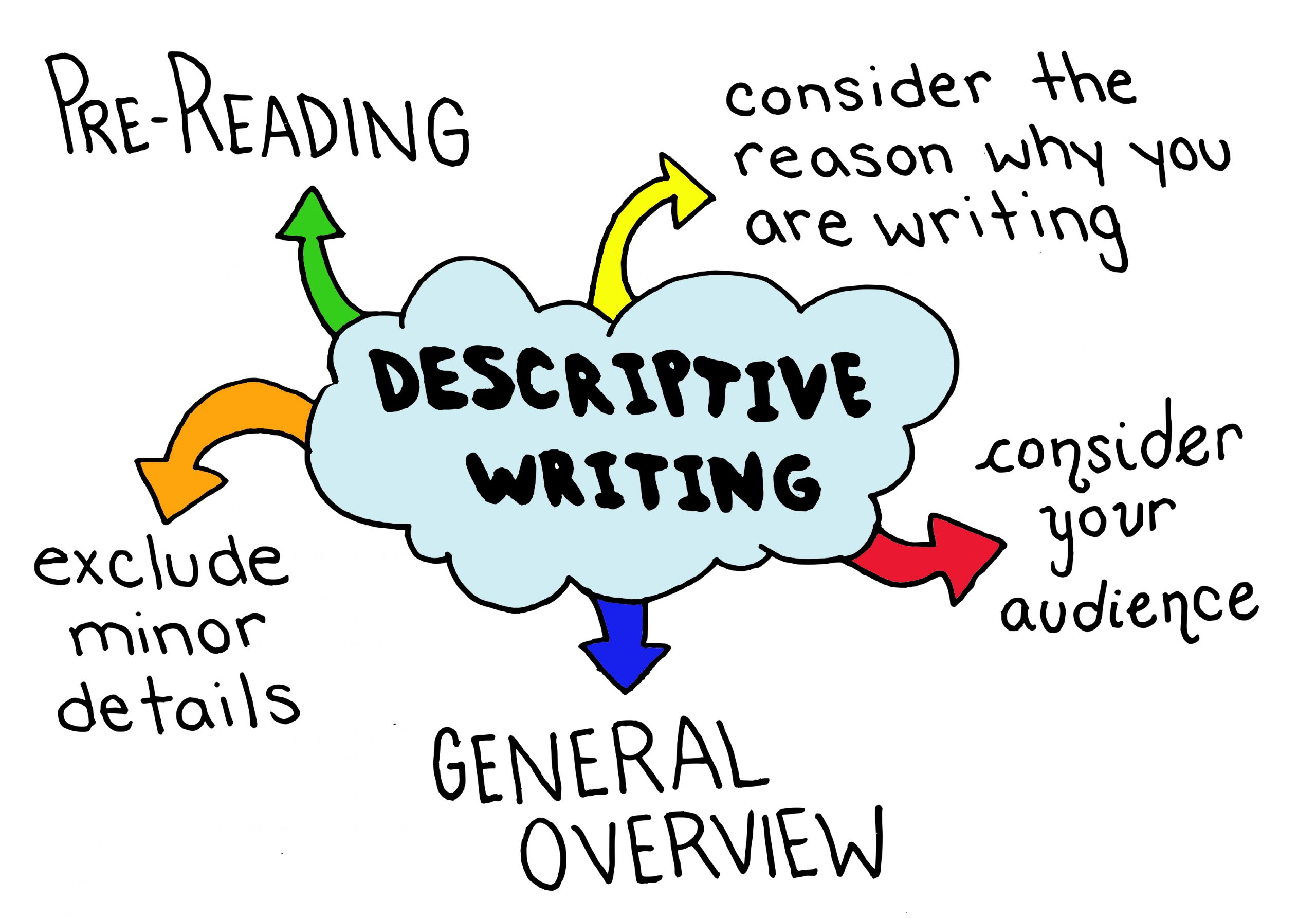37 Descriptive Writing
What it is?
Have you ever been asked to describe or summarize a text?
In descriptive writing, you describe or write a summary of a text you’ve read. This type of writing usually does not include your personal opinion or critique. Rather, it focuses on a summary of what the authors said.
You will be asked to engage in many types of descriptive writing for different purposes. In post-secondary nursing programs, you are often asked to concisely and comprehensively summarize the key ideas of a text. For example, you may be asked to provide a 250-word summary of a journal article as a way for the instructor to evaluate your capacity to understand the main argument or ideas contained within a text. Other times, your instructor may request you to write a summary of a research study. In this case, the audience may be a group of practicing nurses and the summary provides a brief overview of the current research.

Figure 4.1: Illustration of descriptive writing
How to do it?
So, how do you write a summary and where do you start? See Figure 4.2. Here are a few pointers:
1. Consider the reason why you are writing the summary and the audience you are writing for; these will influence how you write the summary. Is the summary for your own benefit? For example, are you trying to summarize the main points of a text to ensure you understand it and help you study? Are you writing the summary for a specific audience (e.g., your instructor) to demonstrate your knowledge? Are you summarizing a text so that other groups (e.g., practitioners) have a short text to reflect upon?
2. To effectively summarize a text, you should do some pre-reading followed by a close and full reading of the text. While reading, you should take notes either by annotating the text or engaging in dialectic notetaking (see Chapter 2).
3. Then, document in point form the main points and the supporting points of the text. For a research article, for example, you should indicate the study purpose, the study approach (i.e., the methods), and the study findings. If you are writing for an audience of practitioners, you should summarize the clinical implications. For example, how does this text or this research influence nursing practice?
4. It is now to time to write the summary. Remember, a summary provides a general overview of the text and excludes minor details or details that are not central to the text. Use language that reflects a summary such as: “The authors explain…”, “The authors claim…”, “In this article, it is suggested that…”, “Brown et al. report that the clinical implications include …”
5. You will often be expected to begin the summary by identifying the text source (e.g., the authors and text title) and to complete the summary with a bibliographic citation of the text.

Figure 4.2: Steps of descriptive writing
What to Keep in Mind?
Some key points to keep in mind as you are writing a summary:
- Use complete sentences.
- Write the summary in a neutral voice and avoid incorporating your opinion or critique of the text.
- Paraphrase the text in your own words and avoid the use of direct quotations.
- The length of the summary varies depending on the reason for completing it and the audience – generally, a summary may range from a few sentences to a couple of pages.
Activities: Check Your Understanding
Writing that describes or summarizes something.

